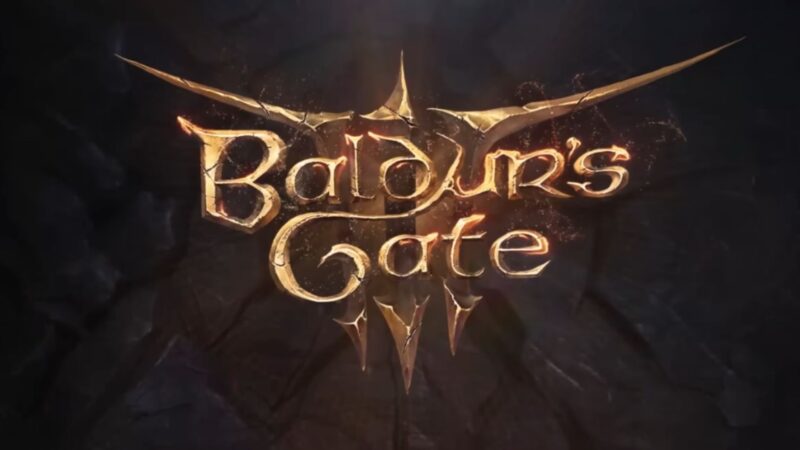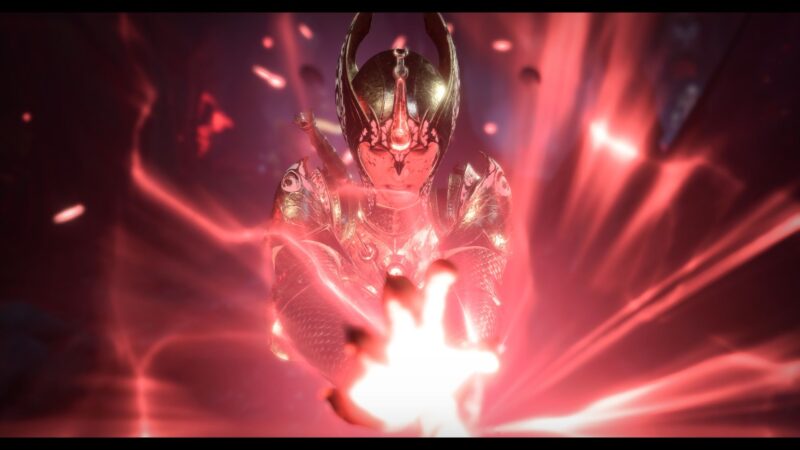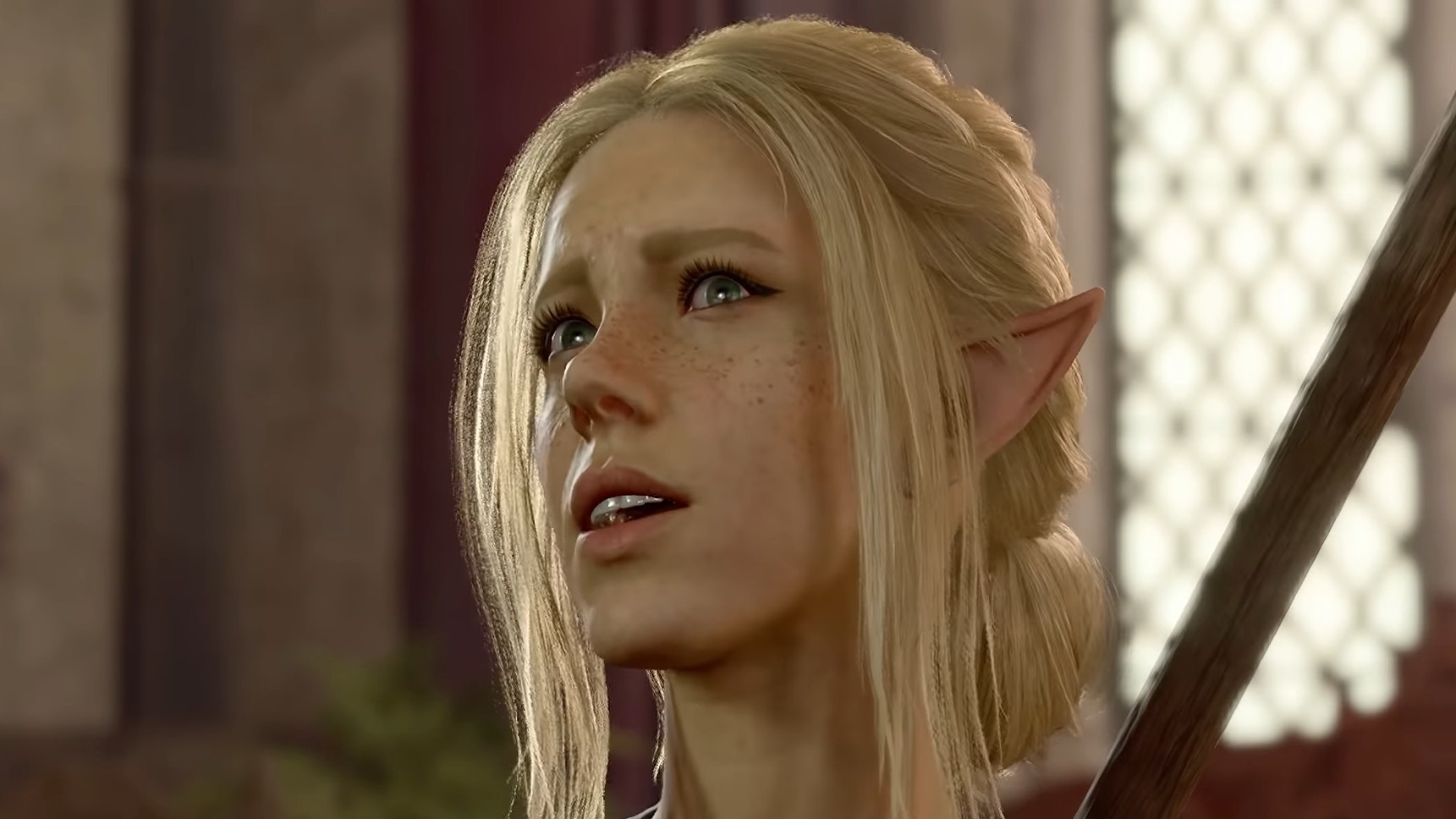Discover the astonishing potential of the top 10 best feats for every build in Baldur’s Gate 3 and optimize your build playstyle.

Feats in Baldur’s Gate 3 are unique skills or abilities that players can choose for their characters at certain level thresholds. Feats offer a variety of benefits like armour proficiency, increased ability score, learning new spells, or optimizing your BG3 build. In most classes, subclasses, and builds, you will pick one feat at levels 4, 8, and 12. However, this can change when using Rogue, Fighter, and Multiclassing. In Baldur’s Gate 3: The 10 Best Feats for Every Build, we will explain our top 10 favorite feats, and how to use them.
What Are the 10 Best Feats for Every Build in Baldur’s Gate 3
Great Weapon Master is the best feat in Baldur’s Gate 3 because it lets you make a secondary attack and gives you +10 damage. Lucky is the most versatile feat, Spell Sniper is best for spellcasters, Sharpshooter is best for ranged damage, and Shield Master is best for defensive builds. No matter what your build is in BG3, we’ll list our favorite and strongest feats for you to consider and how to use them.
Top 10 Best Feats for Every Build in BG3:
- Great Weapon Master: High damage output and utility.
- Lucky: Flexible and versatile, regardless of build.
- Spell Sniper: Increases critical chance and provides other helpful benefits.
- Sharpshooter: The best damage for ranged weapon users.
- Magic Initiate (Warlock): Incredible utility for spellcasters.
- War Caster: Ideal for concentration-heavy spellcasters.
- Shield Master: Optimal for defensive shield-wielding builds.
- Elemental Adept: Excellent for elemental-specific spellcaster builds.
- Savage Attacker: Adds consistent damage to weapon attacks.
- Tavern Brawler: Incredibly strong for unarmed monks.
10 Tavern Brawler

Tavern Brawler feat features in Baldur’s Gate 3:
- Increase your Strength or Constitution by 1, to a maximum of 20.
- When you make an unarmed attack, use an improvised weapon, or throw something, your strength modifier is added twice to the damage and Attack rolls.
Choose the Tavern Brawler feat if you’re aiming to enhance your damage in unarmed combat. It doubles your Strength modifier, boosting both damage and attack rolls significantly. With increased Strength, your strikes pack more power, and your chances of landing hits rise substantially.
For Monks, particularly those following the Way of the Open Hand subclass, Tavern Brawler stands out as the ultimate damage booster. By consuming an Elixir of Hill Giant Strength, you can temporarily raise your strength to 21, resulting in a +5 Strength modifier applied to both your attack and damage rolls.
Additionally, Barbarian builds, like the Berserker Barbarian, can benefit significantly from this feat. In Act 3, seize the opportunity to acquire the legendary Nyrulna trident from the cunning Akabi Djinni in Rivington. This weapon deals massive area damage, aligning perfectly with the Barbarian’s Enraged Throw ability.
While Tavern Brawler’s application is limited to specific builds, it shines brilliantly for Monks, Barbarians, and characters proficient in throwing items. If you’re among these classes, Tavern Brawler is undeniably one of the best feats in Baldur’s Gate 3.
9 Savage Attacker

Savage Attacker feat features in Baldur’s Gate 3:
- When making melee weapon attacks, you roll your damage dice twice and use the highest result.
To add more consistent damage to your character, choose the Savage Attacker feat! Roll your damage dice twice and select the highest result when making a melee weapon attack. This is similar to Advantage and can be stacked for a powerful combination.
Builds that prefer two-handed melee weapons, like Paladins, Fighters, and Barbarians, can gain more consistent damage from Savage Attacker. Combine it with Great Weapon Master for consistent burst damage without a high ability score requirement.
Savage Attacker is limited to specific martial melee builds and playstyles. If you lack consistency in your attack damage, consider Savage Attacker in Baldur’s Gate 3.
8 Elemental Adept

Elemental Adept feat features in Baldur’s Gate 3:
- Spells you cast ignore Resistance to a damage type of your choice. In addition, when you deal that type of damage with a Spell, you cannot roll a 1. Damage resistance options are one of the following:
- Elemental Adept: Acid
- Elemental Adept: Cold
- Elemental Adept: Lightning
- Elemental Adept: Fire
- Elemental Adept: Thunder
Embrace the Elemental Adept feat if you’re a spellcaster aiming to master a specific elemental damage type. This feat empowers you to bypass resistance to the chosen element and eliminates the risk of rolling a minimum damage value. Resistance halves elemental damage, so this feat becomes essential, preventing significantly weakening your attacks and bolstering your overall damage output.
Ideal for Draconic Bloodline Sorcerers, Elemental Adept can be synergized with Elemental Affinity Damage (fire), granting bonus damage based on your Charisma Modifier. To maximize its effectiveness, focus your build on a specific damage type, such as fire or ice, aligning with the availability and impact of related spells.
While Elemental Adept is exclusive to spellcasters dealing damage, when harnessed by Warlocks, Wizards, or Sorcerers, it transforms into one of the most potent feats for consistent elemental damage.
Also Check:- BG3 Map
7 Shield Master

Shield Master feat features in Baldur’s Gate 3:
- Shield Master: Gain a +2 bonus to Dexterity Saving throws when wielding a Shield.
- Shield Master Block: If a spell forces you to make a Dexterity Saving Throw, you can use your Reaction to shield yourself and diminish the effect’s damage.
Opt for the Shield Master feat if you aim to craft a formidable shield-wielding character with a solid defensive stance. This feat increases your Dexterity Saving throws, enabling you to add your proficiency bonus when facing specific attacks or negative effects, effectively evading harm.
Fighters, Clerics, and Paladins excel with Shield Master, often at the center of battle, drawing enemy attacks. The Shield Master Block feature proves invaluable, reducing spell damage significantly if you succeed in a Dexterity Saving Throw.
While this feat demands Shield Proficiency, a straightforward solution lies in choosing the High Half-Elf or Human race. Civil Militia grants Shield Proficiency irrespective of your class, enhancing your survivability instantly. Additionally, spellcasters can wield a shield alongside versatile quarterstaff, boosting Armor Class and enhancing your ability to avoid attacks. Thus, don’t overlook Shield Master – it’s undeniably one of the most underrated feats in Baldur’s Gate 3.
6 War Caster

War Caster feat features in Baldur’s Gate 3:
- War Caster Concentration: You gain an Advantage on Saving throws to maintain Concentration on a Spell.
- War Caster Opportunity Spell: You can also use a Reaction to cast a Shocking Grasp at a target moving out of melee range.
Choose the War Caster feat if you’re a spellcaster looking to enhance combat effectiveness with concentration-based spells. This feat grants you an advantage on Constitution saving throws required to maintain concentration on spells. When you take damage while concentrating, you must make a Constitution Saving Throw. Gaining Advantage means you roll two dice, selecting the higher result to ensure you retain your concentration.
Classes like Bard, Cleric, Druid, and Paladin frequently rely on maintaining concentration. While this feat is specific to spellcasters dependent on concentration-based spells, if your entire build revolves around providing essential buffs, dealing damage, or any other concentration-reliant abilities, then War Caster stands out as one of the top feats in Baldur’s Gate 3.
5 Magic Initiate Warlock

Magic Initiate Warlock feat features in Baldur’s Gate 3:
- Learn 2 Cantrips and a 1st-level spell from the Warlock spell list. You can cast the 1st-level Spell once per Long Rest. Your Spellcasting Ability for all three spells is Charisma.
The Magic Initiate (Warlock) feat is a good choice for any character who wants to gain access to some Warlock spells. This feat enables you to select two Warlock cantrips and one 1st-level Warlock spell, making it an ideal choice for characters emphasizing their Charisma ability scores, like Paladins and Sorcerers.
Eldritch Blast stands out as the game’s premier cantrip, growing in power significantly at levels 5 and 10. Combining it with the Hex spell creates a formidable force damage and debuff combination. Notably, cantrips don’t consume spell slots, proving invaluable on higher difficulty settings like Tactician, where rest resources are limited.
However, the Magic Initiate Warlock feat is confined to the Charisma ability score. With the rise of multiclassing, dedicating a few levels to Warlock might be a more advantageous strategy than investing in this feat. Nevertheless, for Charisma-based characters aiming to wield the mightiest cantrips, the Magic Initiate Warlock feat in BG3 should undoubtedly be on your radar.
4 Sharpshooter

Sharpshooter feat features in Baldur’s Gate 3:
- Sharpshooter Low Ground: Your ranged weapon attacks are not penalized for High Ground Rules.
- Sharpshooter All In: Ranged weapon attacks with weapons you are Proficient with have a -5 penalty to their Attack roll, but deal an additional 10 damage.
Maximize your ranged weapon damage output with the Sharpshooter feat! Ignore the high-ground penalty on attack rolls and deal an additional +10 damage when you land an attack. This feat is ideal for Ranger, and Rogue builds emphasizing high Dexterity, ranged damage, and mobility.
The High Ground rule helps keep your damage consistent even when you’re lower than your target. Attacking from above a target by 2.5 meters gives you an additional +2 damage, but attacking from below by 2.5 meters gives you a -2 penalty. Sharpshooter eliminates this issue, helping you keep your damage high until you can move to a better position.
The downside of this feat is that it’s limited to ranged weapon users. Additionally, unlike the Great Weapon Master feat, you don’t get an additional attack when you critically strike a target. Great Weapon Master is similar in that it provides a +10 damage bonus and a -5 penalty, but it also allows you to use a bonus action to attack if you kill or critically strike a target. However, Sharpshooter is still the best feat for ranged damage weapon users in Baldur’s Gate 3.
3 Spell Sniper

Spell Sniper feat features in Baldur’s Gate 3:
- The number you need to roll a Critical Hit while attacking with a Spell is reduced by 1.
- Learn one cantrip that uses the class Spellcasting Ability. Cantrips you can learn:
- Bone Chill Eldritch Blast Fire Bolt Ray of Frost Shocking Grasp
- Thorn Whip
Increase your burst damage and gain a powerful cantrip with the Spell Sniper feat. The main bonus of Spell Sniper is that it lowers the number needed to be critically hit by 1 on spells. This bonus can stack with other similar effects from subclasses or items.
Critical hits provide the most burst damage in Baldur’s Gate 3. To critically strike, you need to roll a 20, but with Spell Sniper, you can critically strike on a 19 or 20. The damage roll of a critical hit is doubled, including damage from additional sources like the Paladin’s Divine Smite.
Additionally, Spell Sniper gives you an advantage over the Magic Initiate (Warlock) feat. If you choose the Eldritch Blast cantrip, it will use your caster’s ability score, not Charisma. This opens Eldritch Blast to more classes and builds, but it also reduces the critical strike chance.
2 Lucky

Lucky feat features in Baldur’s Gate 3:
- You gain 3 Luck Points, which you can use to gain Advantage on Attack rolls, Ability Checks, or Saving throws, or to make an enemy reroll their Attack roll.
The Lucky feat is the most versatile tool in Baldur’s Gate 3, offering crucial assistance in defensive maneuvers, offensive strikes, and various ability checks. Upon selecting Lucky, your character gains a valuable resource – Luck Points – accessible from your toolbar. By setting the reaction to “ask” for Attack Rolls or rerolling incoming damage in your spell book, you wield the power to manipulate dice rolls in your favor, a game-changing advantage.
Rogues, reliant on the Advantage mechanic for extra sneak attack damage, and multiclass rangers benefit greatly from Lucky. When paired with these classes, it optimizes damage output significantly, becoming an essential addition to their strategies.
Yet, Lucky’s utility extends beyond combat scenarios. Utilizing Luck Points during Ability Checks proves invaluable during conversations or exploration, providing that crucial boost to Insight and Perception skills, unveiling hidden treasures and secrets.
While Lucky may not specialize in singular areas like damage, healing, or defense, it excels as a versatile solution, a jack-of-all-trades feat ready to aid any build. Though it may require some understanding to utilize to its full potential, Lucky undoubtedly ranks among the best all-around Baldur’s Gate 3: The 10 Best Feats for Every Build Guide.
1 Great Weapon Master

Great Weapon Master feat features in Baldur’s Gate 3:
- Great Weapon Master Bonus Attack: When an attack with a melee weapon lands a Critical Hit or kills a creature, you can make another melee weapon attack as a Bonus Action that turns.
- Great Weapon Master All In: When attacking with a Two-Handed or Versatile melee weapon (in both hands) that you are Proficient with, Attack rolls take a -5 penalty, but their damage increases by 10.
The Great Weapon Master feat is the best offensive feat that allows you to deal more damage with melee weapons and make additional attacks. It is a good choice for any build that wants to increase melee weapon damage, like the Barbarian, Fighter, and Paladin.
With Great Weapon Master (GWM), you gain access to two powerful feats, a bonus attack, and all in. All in, it gives you +10 damage at the expense of a -5 penalty to attack rolls. This hurts your chance to land an attack but increases damage dramatically. The negative can be quickly mitigated with the Blessed spell or Elixir of Heroism, increasing your chances of landing an attack. Additionally, as you level, gaining more strength, the negative becomes unnoticeable, but the damage doesn’t fade.
The second feature of the GWM feat is the Bonus Attack. This is an extraordinary feat for Barbarians and Fighters, who lack some of the bonus action utility of other classes. If you critical strike or kill a target, you gain another attack with a bonus action. Fighters, at level 11, can attack 4x per action. You are highly likely to land a critical or kill a target, giving you yet another attack.
The limitations are it’s purely focused on melee weapon damage users. However, our tier list and Patch 3 build list show how prevalent and powerful these builds are. You could argue that the two to three builds in raw combat power are melee weapon damage users. Not coincidentally, all using the most powerful feat in Baldur’s Gate 3, Great Weapon Master.
Looking For More About Baldur’s Gate 3?
Thank you for reading Baldur’s Gate 3: The 10 Best Feats for Every Build Guide. We provide the latest news and create guides for Baldur’s Gate 3. Also, watch me play games on Twitch or visit my YouTube channel!
 Reddit
Reddit
 Email
Email


